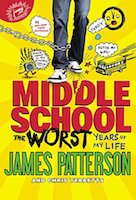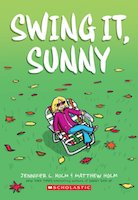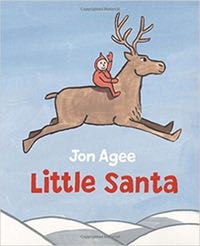Sarah: A friend of mine, her daughter is going to middle school next year. The school she goes to now has a lot of kids who have been protected from the bumps and bruises of life. The don’t have testing, they don’t have grades. It feels very accepting and hippie-ish, but they get to use computers.
Gene: I have some friends whose kids went to a school like that, and they didn’t end up too crazy.
S: It’s interesting, some of them go to similarly special middle schools, and some of them go to the regular middle schools, which can be a bit of a change.
G: Kids with chains and filed-down teeth waiting for them at the door.
S: Waiting to suck their blood.
So my friend gets a letter from the school about how to help her help her daughter to adjust to the changes in going to a new school. The whole thing is about how it’s hard, and it’s harder when they’re going through puberty and social changes, and starting to argue with their parents and having their own sense of what their lives should be. They’re no longer your cute perfect darling children. It can be hard. But it doesn’t approach it as though it’s normal (which it is) and that every parent goes through this (which they do), it’s more like, “This is the upcoming tsunami that’s going to hit your home, you may be concerned. Here’s how to ensure they don’t become dead-eyed drug addicts.”
G: I think I got a letter like this, too, years ago.
S: At the end of the letter, there is a list, Great Books About — and this is actually in quotations — “Middle School.”
G: (laughs) Because we’re not really talking about middle school?
S: I have no idea. There are four fiction and three nonfiction books. The nonfiction books are fairly well-chosen. There’s some recent ones and some older ones that are pretty good.
G: Does it mention using a short-wave radio to call for help?
S: Right, no, it’s not quite that bad. The fiction books, though… my friend, who has an MLIS, who makes booklists herself, was dismayed that they were so old. Old enough that two weren’t in the public library anymore, one was available only as an ebook rerelease, one that’s just old and there are only two copies available.
G: Maybe it’s a cry for help from whoever made that list. Maybe the list had to be district-approved.
S: Exactly. I feel the same frustration with lists people get from their doctors after a diagnosis. The books are all ten or fifteen years old and the library system only has one copy left, with a long, long waiting list. I want to write back to the doctors with a list of ten newer books and tell them to pick the ones they like.
G: You should do that for the school.
S: My friend asked me to make her a list she could share with the other parents.
G: That’s great! You’re living the librarian’s dream!

 S: But 99% of my booklist is graphic novels, because that’s what I read. So I wanted to ask if you had some recommendations. Here’s what I have so far:
S: But 99% of my booklist is graphic novels, because that’s what I read. So I wanted to ask if you had some recommendations. Here’s what I have so far:
Awkward and Brave
G: I really liked Brave.
S: Drama.
G: How old is the main character in Drama?

 S: I had thought she was in high school, but the synopsis said middle school.
S: I had thought she was in high school, but the synopsis said middle school.
Jedi Academy.
G: Timeless.
S: All’s Faire in Middle School.
G: Liked it, but maybe a limited audience.
S: I added this because I like the author and it had a lot of positive reviews, Planet Middle School. It’s poems about a girl making the shift into middle school, trying out new 
 ways of being more grown up. And these two, which are constantly being requested by kids, The Strange Case of the Origami Yoda and Dork Diaries.
ways of being more grown up. And these two, which are constantly being requested by kids, The Strange Case of the Origami Yoda and Dork Diaries.
G: Are those middle school?
S: As far as I can tell, yes. Though it’s tough to say sometimes, when the summary describes the characters as being in sixth grade. That could be elementary or middle school. My friend does know me, and would not be 
 surprised if I gave her a list full of graphic novels, but if you can think of any others. There’s those James Patterson middle school comedy novels that seem to be really popular…
surprised if I gave her a list full of graphic novels, but if you can think of any others. There’s those James Patterson middle school comedy novels that seem to be really popular…
G: I don’t read this age very much.
S: …and I don’t know if they’re positive hopeful you-can-do-it kind of books about 
 middle school. Because you don’t necessarily want to give them the books where it looks like everyone gets teased.
middle school. Because you don’t necessarily want to give them the books where it looks like everyone gets teased.
G: I haven’t read this series, but I’ve heard they’re good: Positively Izzy. And Roller Girl is solidly middle school, about finding your way.
S: But it’s a summer story more than a school story.

 G: But it’s a friend story. Real Friends is good, too
G: But it’s a friend story. Real Friends is good, too
S: But that’s elementary, right?
G: Is it?
S: I seem to think it was pretty young.
G: I can’t remember how old the kids are in the Sunny Books, but Swing It Sunny is middle school. And there’s now a middle school Babymouse book.

 S: I think I should ask a children’s librarian, too, because kids in late elementary grades are the ones who are curious about starting middle school. The kids in middle school are thinking about other things, because they’re there already. Which is why I thought of Drama, because it’s not about starting middle school, it’s about being in it.
S: I think I should ask a children’s librarian, too, because kids in late elementary grades are the ones who are curious about starting middle school. The kids in middle school are thinking about other things, because they’re there already. Which is why I thought of Drama, because it’s not about starting middle school, it’s about being in it.
G: Yeah, I would never booktalk a book about starting middle school in a middle school.
S: Right. My friend thought that clearly the expert would be the teen librarian, but apparently not.
G: Ask us about the transition to high school. The indirect stories, anyway. The direct how-tos are for parents.
S: I want to have the parents read these graphic novels. I want to say, “Hey, it’s not that bad. Everything seems horrible to them because that’s their bodies and their brains going through big changes. Everything seems intense because it’s all new. But people survive this. Kids survive this every day. You’ll survive it. It’s going to be obnoxious, but you’ll survive it.”
Tag: poetry
Dreamtime
In Between: Poetry Comics (Visual Poetry Series) by Mita Mahalo. Pleaides Press, 2017. 9780807167786. 80pp.
 Gene: You know how it’s every librarian’s dream to discover an author no one knows about that’s totally f’ing awesome?
Gene: You know how it’s every librarian’s dream to discover an author no one knows about that’s totally f’ing awesome?
Sarah: My dream is people leaving the library at closing time.
G: …no masturbating at the computers…
S: …no needles in the bathroom…
G: I share those dreams with you. This is the book dream, the dream where you know about a book that’s so good everyone else needs to know about it. And you get to tell them.
Mita — I started buying her minicomics at Short Run years ago. She makes collage comics out of cut paper, and she’s an associate professor of English at the University of Puget Sound. She’s also the friend of a friend of ours. So I see her at local comics shows, I have two pieces of commissioned original art by her hanging in my house — one of animals that represent my family, one of a scene at the end of the first Highlander movie. But I digress. This book was put out by the University of Central Missouri Press, and they saw poetry in Mita’s comics. I’d never really considered them poetry, but it’s a label that fits, it seems obvious now.
In addition to the short comics she’s published before, the book contains a story taking place between them, about a girl with antlers growing out of her back. Mita uses newspaper for her skin.
The first comic of hers I ever saw was “Unidentified Feeling Object,” which is about a little spaceship, and it’s here in the book, too.
S: There’s little heart on the end!
G: The spaceship is made of newspaper too.
S: She uses the panel borders, too. That’s great.
G: The paper she cuts out breaks the borders sometimes. And it’s clearly photographs of paper — there are shadows under them because they’re at different heights. I remember seeing this for the first time and just going, “Wow!” I think she looked at me like I was insane because I was so giddy. I’d found something amazing! And I’ve been a fan of her work ever since.
I’m going to show you two other poems in here, to show you Mita’s range. This is called “Patterns.” It’s much more of a classic collage made from magazine images but it has cut paper elements, and it’s on an old clothing pattern. Captain Kirk makes an appearance, and there are lots of animal heads.
S: It’s beautiful.
G: I love how she uses cut paper to create the idea of water.
S: And there are different dress patterns on every page, everyone is wearing a dress.
G: I didn’t notice that because I’m not smart.
Then this is a one page called “Caws,” about crows in a tree.
S: This is the first time I’ve been excited about a poetry book from a university press.
G: Shame!
Look at a little more of the story of the girl between the poems, with the girl with the antlers on her back. I think it was made for this, at at least I’ve never seen it. I’m not sure what it means.
S: Are they antlers? Maybe they’re branches.
G: She’s breaking them.
S: Look at the words that fell here.
G: It’s just a suggestion of what’s happening. And then she gives away the branches.
S: The words on her hands are playing into it as well.
G: Every time I look at anything Mita has created I notice something new. Sometimes it’s just a texture, or the way the space seems to work, or a word.
“I became insane, with long intervals of horrible sanity”
Poe: Stories and Poems: A Graphic Novel Adaptation by Gareth Hinds. Candlewick, 2017. 9780763681128.
 I’m a huge fan of Hinds’ graphic novel adaptations of classics (his version of The Odyssey is my favorite), but not of Poe’s fiction, yet Hinds’ amazing skill pulled me through. First there’s a legend at the beginning of the book, a list of recurring motifs in Poe’s work. Hinds then puts the appropriate symbols at the beginning of each story and poem to let readers know know which will contain thing like, for example, murder and rats, so that readers they can decide for themselves to keep reading a particular story or skip it.
I’m a huge fan of Hinds’ graphic novel adaptations of classics (his version of The Odyssey is my favorite), but not of Poe’s fiction, yet Hinds’ amazing skill pulled me through. First there’s a legend at the beginning of the book, a list of recurring motifs in Poe’s work. Hinds then puts the appropriate symbols at the beginning of each story and poem to let readers know know which will contain thing like, for example, murder and rats, so that readers they can decide for themselves to keep reading a particular story or skip it.
My favorite adaptation, “The Mask of the Red Death” (contains Death, Disease, Scary Sounds), about a bunch of upper class folks who try to seal themselves away from a plague, features the creepiest masquerade costume I’ve ever seen — a disease personified. Don’t skip to the end of the story, it’s freaky. There’s a lot to love here: “The Cask of Amontillado,” “Annabel Lee,” “The Pit and the Pendulum,” “The Tell-Tale Heart,” “The Bells,” and of course “The Raven.” There’s also a lot to freak you out. The rats in “The Pit…” would send my wife screaming. And don’t miss the creepy details drawn into the feathers of Hinds’ raven, which include skulls and skeletal hands.
Ah Gee
I fell in love with Jon Agee’s picture books when I read and reread and rereread…. Terrific to my daughter. It was one of her favorite picture books (probably because I loved doing the grumpy protagonist’s voice — he’s unhappy no matter how well things work out for him). It was his drawings that really got me — they’re absolutely brilliant cartooning. Not a line is wasted and they perfectly convey action and character. (Maybe it’s time for me to cosplay the old man in the brown overcoat.)
I was looking at Terrific and Nothing the other day, getting ready for a talk I’m going to give on picture books that use the tools of cartooning, and decided to order all of the Jon Agree books at the Seattle Public Library that I’d never read. These were my favorites.
Orangutan Tongs: Poems to Tangle Your Tongue by Jon Agee. Disney-Hyperion, 2009. 9781423103158.
 Hands are hard to draw. Hands using chopsticks, even harder. The title page of this book features 10 orangutans using chopsticks. It’s a signal that Agree is going to show off throughout the book, both in terms of the funny poems and in the variety of things he draws: a newsstand, the Purple-Paper People Club’s meeting, two moose, embers, a carnival, three-toed tree toads tying shoes, two hotels, dodos, more orangutans, and a crowd scene on a New York City subway.
Hands are hard to draw. Hands using chopsticks, even harder. The title page of this book features 10 orangutans using chopsticks. It’s a signal that Agree is going to show off throughout the book, both in terms of the funny poems and in the variety of things he draws: a newsstand, the Purple-Paper People Club’s meeting, two moose, embers, a carnival, three-toed tree toads tying shoes, two hotels, dodos, more orangutans, and a crowd scene on a New York City subway.
(If you guessed that the tongue twister “Two Tree Toads” is my favorite poem in the book, you were right. But it was a close race.)
Little Santa by Jon Agree. Dial Books for Young Readers, 2013. 9780803739062.
 I’m as surprised as you that there’s a Christmas book on this list. Not my holiday. The last time I enjoyed anything overtly Christmasy was the Finnish horror film Rare Exports. Agree’s young Santa dresses in a red hooded onesie that makes him look like he’s trying to sneak into Gabbaland unnoticed. He lives with his family at the North Pole where they are all miserable (he’s the only one who loves it). They decide to relocate to Florida, but their house is buried in a snow drift. They send Santa up the chimney to get help leading to…Christmas. When his family is finally rescued, Santa stays behind, but you probably already knew that.
I’m as surprised as you that there’s a Christmas book on this list. Not my holiday. The last time I enjoyed anything overtly Christmasy was the Finnish horror film Rare Exports. Agree’s young Santa dresses in a red hooded onesie that makes him look like he’s trying to sneak into Gabbaland unnoticed. He lives with his family at the North Pole where they are all miserable (he’s the only one who loves it). They decide to relocate to Florida, but their house is buried in a snow drift. They send Santa up the chimney to get help leading to…Christmas. When his family is finally rescued, Santa stays behind, but you probably already knew that.